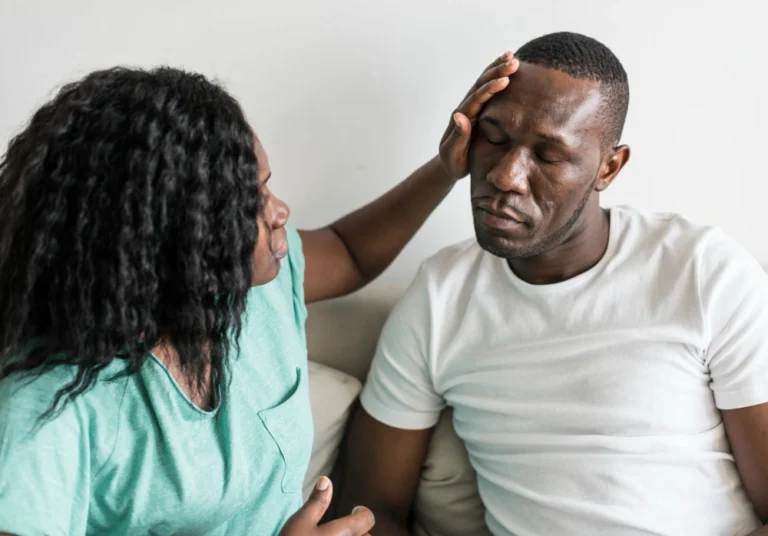Panic Attacks and Panic Disorder: Causes and Treatments That Work

Panic attacks and panic disorder are common mental health issues that can deeply impact a person’s life. At GloFusion, we understand that these conditions are often misunderstood, leading to fear and confusion. In this post, we’ll explain the causes, symptoms, and treatment options for panic attacks and panic disorder, along with helpful tips for managing and coping effectively.
Page Contents
What Are Panic Attacks?
A panic attack is a sudden episode of intense fear that triggers severe physical reactions, often without any apparent cause. These episodes can be incredibly frightening, making individuals feel as though they are losing control, having a heart attack, or even dying.
Panic attacks typically peak within minutes and can include symptoms such as a rapid heart rate or palpitations, sweating, shaking or trembling, shortness of breath or a feeling of choking, chest pain or discomfort, nausea or abdominal distress, dizziness or lightheadedness, chills or hot flashes, numbness or tingling sensations, and feelings of unreality or detachment.
What Is Panic Disorder?
When panic attacks occur repeatedly and are accompanied by a persistent fear of having another attack, it may lead to panic disorder. This condition is characterized by:
- Frequent panic attacks
- Persistent concern or worry about additional attacks
- Changes in behavior to avoid situations that might trigger an attack
Panic disorder can severely impact daily life, leading to avoidance of activities, places, or even situations that are associated with previous panic attacks. This avoidance can, in turn, limit an individual’s ability to function normally in society, impacting their work, relationships, and overall well-being.
Causes of Panic Attacks and Panic Disorder
The exact cause of panic attacks and panic disorder is still unknown, but several factors may contribute, including:
- Genetics: A family history of panic attacks or panic disorder may increase the likelihood of developing the condition.
- Major Stress: Experiencing significant life stress, such as the death of a loved one, can trigger a panic attack.
- Temperament: A more sensitive or emotionally reactive temperament may make individuals more prone to panic attacks.
- Changes in Brain Function: Some research suggests that abnormalities in the brain may be linked to panic attacks.
Panic Disorder Symptoms and Diagnosis
To be diagnosed with panic disorder, an individual must experience:
- Recurrent panic attacks.
- Persistent worry about having more attacks or the consequences of these attacks (such as losing control, “going crazy,” or having a heart attack).
- Behavioral changes aimed at avoiding future attacks due to the fear of these attacks.
Healthcare professionals use a combination of:
- Physical exams.
- Mental health evaluations.
- Symptom reviews.
These steps are essential to diagnose panic disorder and to rule out other conditions with similar symptoms, such as heart disease or thyroid problems.

Coping with Panic Attacks
Managing panic attacks and coping with panic disorder involves a combination of lifestyle changes, therapy, and medication. Here are some practical strategies:
- Breathing Exercises: Deep breathing techniques can help manage the immediate symptoms of a panic attack by promoting relaxation and reducing hyperventilation.
- Cognitive Behavioral Therapy (CBT): CBT is a highly effective treatment that helps individuals understand and manage the thoughts and behaviors that contribute to panic attacks.
- Medication: Antidepressants and anti-anxiety medications can be prescribed to manage symptoms.
- Stress Management: Reducing overall stress through activities like yoga, meditation, or regular exercise can help decrease the frequency of panic attacks.
- Panic Attack Prevention Tips: Identifying and avoiding triggers, maintaining a healthy lifestyle, and seeking support from mental health professionals are key to preventing future attacks.
Panic Disorder Treatment Options
Effective panic disorder treatment often involves a combination of approaches:
- Cognitive Behavioral Therapy (CBT): CBT focuses on changing the negative thought patterns and behaviors associated with panic attacks. It is often considered the first line of treatment.
- Medications: Selective serotonin reuptake inhibitors (SSRIs), benzodiazepines, and beta-blockers may be prescribed to manage symptoms.
- Lifestyle Modifications: Regular exercise, a balanced diet, sufficient sleep, and reduced caffeine intake can help manage symptoms.
- Support Groups: Connecting with others who understand what you’re going through can provide emotional support and practical advice.
Conclusion
Living with panic attacks or panic disorder can be challenging, but with the right strategies and support, it is possible to lead a fulfilling life. Understanding the causes, symptoms, and treatment options is the first step toward managing this condition. If you or someone you know is struggling with panic attacks, don’t hesitate to seek help from a healthcare professional.
For more information, you can explore resources from reputable organizations like NIMH Information Resource Center

